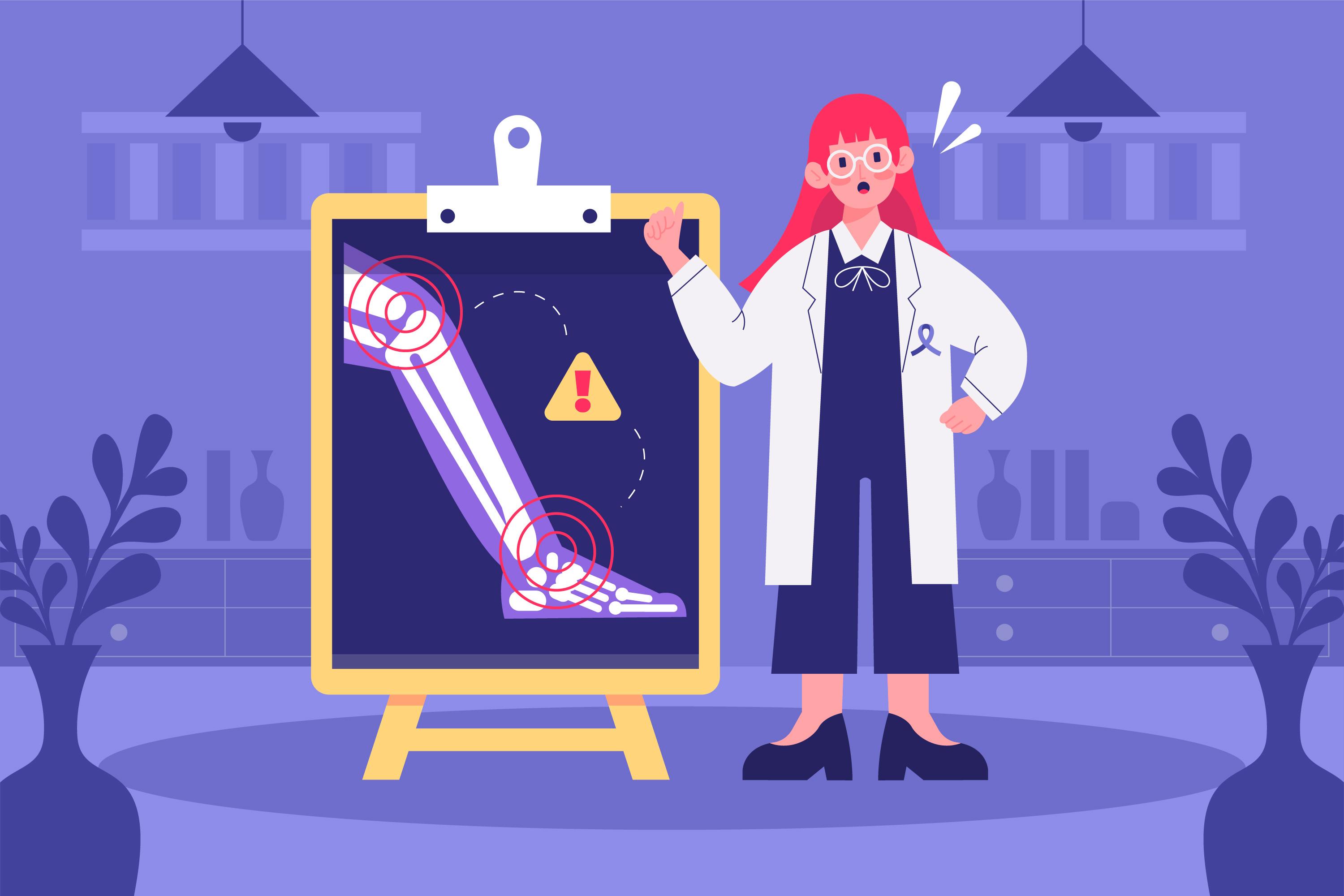
Signs and Symptoms of Osteoporosis: Recognizing the Warning Signs
Recognizing the Warning Signs of Osteoporosis
Osteoporosis is often referred to as a “silent disease” because it progresses without noticeable symptoms until a fracture occurs. This condition significantly weakens bones, making them fragile and more likely to break. Unfortunately, many individuals may not be aware they have osteoporosis until they suffer a fracture from a fall or even from simple actions like bending over or lifting a light object. Understanding the signs and symptoms of osteoporosis is crucial for early detection and intervention. Let’s explore what to look out for:
1. Height Loss
One significant indicator of osteoporosis is a noticeable decrease in height over time. This change can be subtle at first, but if you find that your waistbands fit differently or you’re consistently having to adjust the height of mirrors, it might be a sign of vertebral fractures caused by osteoporosis. These fractures can compress the spine, leading to a stooped or hunched posture known as kyphosis. Keeping track of your height during routine medical check-ups can be an effective way to monitor this aspect of bone health.
2. Persistent Back Pain
Persistent back pain is another concerning symptom. Individuals with osteoporosis may experience back pain, particularly in the lower back, as a result of vertebral compression fractures. These fractures can occur even with minimal trauma, such as lifting a grocery bag or sneezing. If you notice that your back pain is worsening or becoming more frequent, especially if it’s not related to any specific injury, it’s important to consult with a healthcare professional to evaluate your bone health.
3. Bone Fractures
Fragility fractures are a hallmark of osteoporosis and occur with little or no trauma. Common sites for these fractures include the wrist, hip, spine, and shoulder. For instance, a wrist fracture after a minor fall or a hip fracture from a simple slip can indicate underlying osteoporosis. If you find yourself experiencing fractures from minor falls or bumps, this could be a crucial warning sign. It’s vital to discuss any history of fractures with your doctor, as they may recommend bone density testing.
4. Loss of Grip Strength
A reduction in grip strength is another sign to watch for. If you find it increasingly difficult to perform daily tasks that require strength and coordination—such as opening jars, carrying groceries, or even shaking hands—this may indicate weakening bones due to osteoporosis. Loss of grip strength can also affect your overall quality of life, making it difficult to engage in hobbies or activities you once enjoyed. It’s essential to address any concerns about muscle weakness or changes in grip strength with a healthcare provider.
5. Brittle Nails
Brittle nails that break easily may also signal underlying bone health issues, including osteoporosis. Changes in nail texture and quality can sometimes reflect changes in bone density. If you notice that your nails have become more fragile and prone to breaking, this could be a sign of a more significant issue. Nail health can often serve as an indicator of overall health, so paying attention to these changes can be helpful in monitoring your well-being.
6. Receding Gums and Tooth Loss
Osteoporosis can affect the jawbone, leading to receding gums and potential tooth loss. Dental problems such as loose teeth or difficulty fitting dentures may indicate bone loss in the jaw. Since the jawbone supports the teeth, any significant changes could lead to increased dental issues. Regular dental check-ups can help monitor oral health and detect any early signs of bone loss.
7. Poor Posture
Finally, a stooped or hunched posture, also known as kyphosis or dowager’s hump, can develop as a result of vertebral fractures caused by osteoporosis. This change in posture may become more noticeable over time and can lead to discomfort and additional health complications. Maintaining good posture is crucial not only for appearance but also for preventing strain on your back and neck.
Understanding and Taking Action
While osteoporosis may not always cause noticeable symptoms in its early stages, being aware of these warning signs is essential for proactive health management. If you experience any of these symptoms or have risk factors for osteoporosis—such as advanced age, family history, low body weight, certain medications, or specific medical conditions—it is crucial to discuss them with your healthcare provider.
In addition to recognizing these warning signs, you can take several preventive measures to maintain bone health:
- Calcium and Vitamin D Intake: Ensure you are getting enough calcium and vitamin D in your diet. Foods rich in calcium include dairy products, leafy greens, and fortified foods. Vitamin D is essential for calcium absorption and can be obtained from sunlight and fortified foods.
- Regular Bone Density Testing: If you’re at risk for osteoporosis, talk to your doctor about getting a bone density test. This simple test can measure your bone mineral density and help assess your risk of fractures.
- Engaging in Weight-Bearing Exercises: Activities like walking, jogging, and strength training can help strengthen bones and improve balance, reducing the risk of falls.
- Avoiding Smoking and Excessive Alcohol Consumption: Both smoking and excessive alcohol intake can contribute to bone loss. Quitting smoking and moderating alcohol consumption can significantly benefit your bone health.
Early detection and treatment of osteoporosis can help prevent fractures and maintain bone health, ultimately leading to a better quality of life. By understanding these warning signs and taking proactive steps, you can protect your bones and enhance your overall well-being.
To seek medical advice, always consult a Doctor. Here are our recommended experts. Click Here
To read more on Osteoporosis. Click Here


